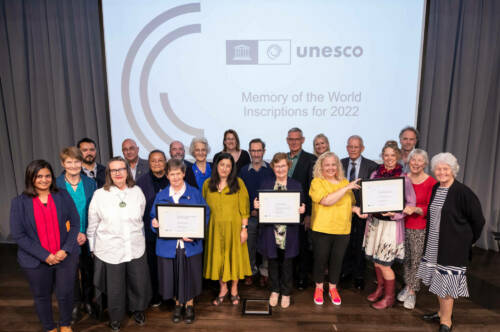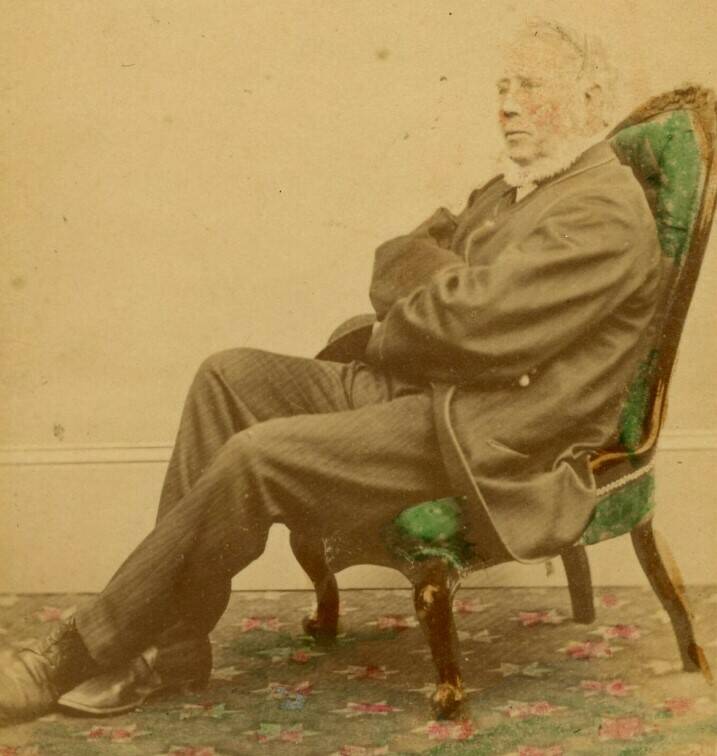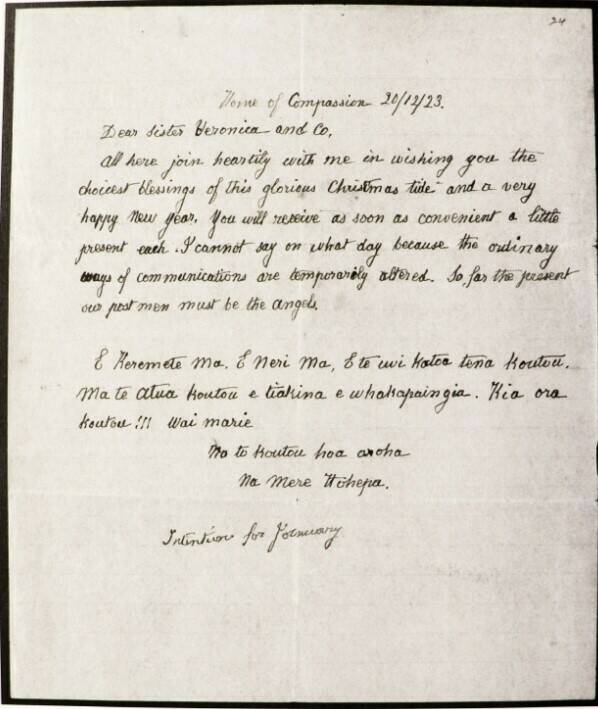New inscriptions added to NZ Memory of the World Register
Three new inscriptions have been added to the Memory of the World Register.
Announcement
Jane Wild, Chair of the Memory of the World Aotearoa New Zealand Trust announced the new inscriptions at a ceremony at the National Library on Wednesday 7 December.
“The inscriptions added to the Register span two centuries and many documentary heritage formats,” said Jane. “These three inscriptions from four institutions include unique taonga comprising archives, letters, photographs and film.”
The event brings the number of inscriptions on the New Zealand register to forty-nine.

The event was attended by NZ National Commission Secretary General, Zuleika Chang and Communications and Information Commissioner Vanisa Dhiru.
The three new inscriptions are:
This is New Zealand
- This is New Zealand, nominated by Archives New Zealand Te Rua Mahara o te Kāwanatanga
A unique, technically sophisticated portrayal of our national identity. Produced to showcase New Zealand at Expo ’70 in Osaka, Japan, This Is New Zealand is one of the National Film Unit’s crowning achievements, showcases its creativity and is a joyous summation of who we were as a nation in 1970. The film was structured around two major aspects: The Land and The People. Filming was undertaken by three different crews over six months in 1968-69, with the idea to cover impressions of all the four seasons.
This is New Zealand proved to be an astonishing success to an overseas audience and, later, an opportunity for New Zealand audiences to enjoy an affirming, visually delightful and uplifting portrait of Aotearoa.

Clendon Papers
- Clendon Papers, jointly nominated by Heritage New Zealand Nga Pouhere Taonga and Auckland Libraries Ngā Pātaka Kōrero o Tāmaki Makaurau
The papers include personal, business and official correspondence and papers, letterbooks, registers, journals, memoir, ephemera, photographs and inscribed books. Some material is in te reo Māori, including letters, land leases and a manuscript copy of the Treaty of Waitangi in Māori. The role of women represented in the papers is important.
From the 1830s to the 1850s they show the importance of family and financial links with England, Australia, and the United States for the early traders. The development of government in New Zealand is seen through James Reddy Clendon’s sale of land at Okiato, his part in the Northern War and his lifelong administrative roles.
Thereafter the papers reflect the changing bi-lingual, bi-racial society of the Hokianga through the Clendon family’s correspondence, business and leisure affairs and their administrative roles in government.

Letters of Meri Hōhepa Suzanne Aubert
- The letters of Meri Hōhepa Suzanne Aubert, nominated by the Sisters of Compassion Nga Whaea Tapu Pūaroha
Suzanne Aubert, intelligent and observant, was a prolific letter writer. Through her letters, she reached out to others, offering encouragement, support and friendship, advocating on their behalf and expressing appreciation and friendship.
Her letters convey much of the social and political context in Aotearoa New Zealand from the mid-nineteenth to early-twentieth century, covering war and settler influx with their traumatic consequences for Māori, and a developing country still lacking social welfare provisions.
About 825 letters written by Meri Hōhepa Suzanne Aubert have been gathered and preserved in the Sisters of Compassion archives. Suzanne Aubert copied most of her letters in case of loss, in a few instances a draft is all that remains. Much of her writing was in French, especially in the earlier period. Since her death, people to whom she wrote letters in her old age have generously donated original documents or copies.

